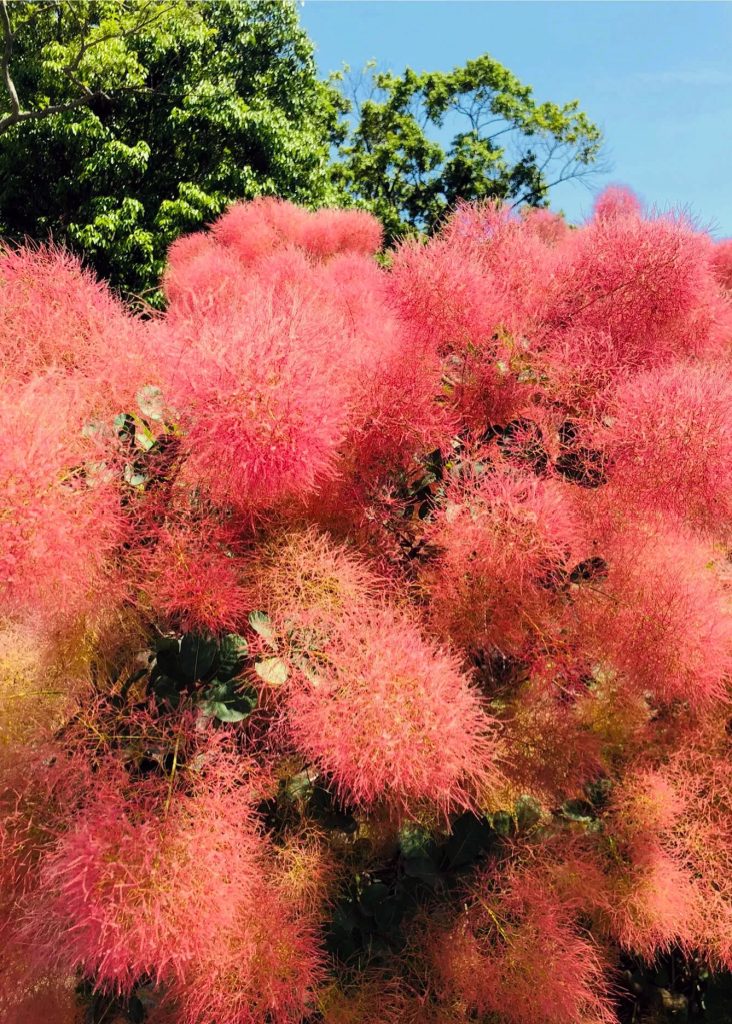
When you go to a park during a break in the rainy season, you’ll find a large, red, cotton candy-like plant thriving near the entrance. True to its appearance, it is called “smoke tree” in English and “煙の木” (kemuri no ki) in Japanese. It also has other names such as “白熊の木” (haguma no ki) and “霞の木” (kasumi no ki). Being a visually unique plant, it naturally garnered various names when people first encountered its surprising form. The smoke tree is dioecious, and the cotton-like structure develops on the female tree. This cotton-like structure, known as the flower stalk, is a result of numerous branches connecting the stem and the flowers. Tiny flowers are attached to the ends of the cotton fibers. This unique appearance is designed to facilitate pollination and the dispersal of seeds over long distances. As it belongs to the same family as poison ivy, it is important to be cautious as it can cause allergic reactions upon contact with its sap. By the way, “食べりゃんせ” (taberyanse) is an old literary and affectionate imperative form of the verb, similar to “通りゃんせ” (tooryanse). It is a dialect still used in some regions and means “Please eat.”
梅雨の晴れ間公園に行くと、入り口に大きな赤い綿菓子の様な植物が茂っています。その見た目の通り、英名を「smoke tree」、和名を「煙の木」と言います。この他にも「白熊の木(ハグマノキ)」とか「霞の木」とという別名もあります。見た目にもユニークな植物で、初めて見たときにはびっくりする様な姿に関心を呼びいろんな呼び名が生まれたのでしょう。スモークツリーは雌雄異株で、この綿の様になるのは雌の木です。花柄と言って、茎と花を繋ぐ枝の部分が無数に発達して綿のような姿になりました。綿毛の先には小さな小さな花が付いています。受粉して種ができ、その種を遠くへ飛ばす為にこの様な姿になりました。ウルシと同じ仲間なので、樹液に触れるとかぶれるので要注意です。ちなみに「食べりゃんせ」は「通りゃんせ」と同じ、親しみを込めた軽い命令形の文語で、「食べて下さい」と言う意味です。地方によっては今でも使う方言です。
